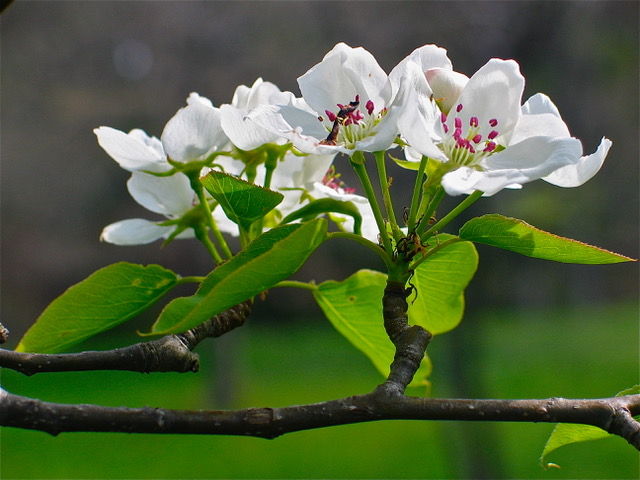 I spent part of our recent snow day in New England on the phone talking to Richard Primack, an ecologist who studies how climate change affects seasonal events such as budburst and bird migration. I was interviewing him for another story, but as we talked, a new one came to light.
I spent part of our recent snow day in New England on the phone talking to Richard Primack, an ecologist who studies how climate change affects seasonal events such as budburst and bird migration. I was interviewing him for another story, but as we talked, a new one came to light.
He told me that about six years ago, his lab started monitoring the spring leaf-out times of trees in suburban Boston, where he and I both live. It turns out that even people who spend their professional lives around plants, like those who work at botanical gardens, hadn’t kept a particularly close eye on local leaf-out dates for many common trees. “Everything here leafs out in April” was about as specific as it got.
So he started to pay attention. He and his graduate students found that while red and Norway maples begin to leaf out in early to mid-April, oaks don’t even start opening their buds until mid-May. There’s generally a four to six-week gap in between.
Well, guess what? My second-grade daughter has some data to add to his records.
Every spring for the past three years, from her bedroom window, my older daughter and I have been making observations of three different trees—a Norway maple, a sycamore maple, and an oak of unknown species—and recording them in a little notebook. They’re the three largest, and closest, trees to her bedroom window, so watching them became an easy part of our bedtime routine. And we’ve seen the exact same pattern that Primack has: the maples leaf out first, and the oak follows a month or more later.
After my conversation with Primack, I took my daughter over to the window and pointed to the trees, still gray and bare in the blowing snow. I asked her if she could remember which tree is the last to open its leaves each spring.
She remembered—she pointed to the oak. Which tree is the first, I asked? She pointed to the “pollen tree,” which is what she calls the Norway maple that looms over our garage. The middle one is the “bud tree,” the sycamore maple that shades much of our backyard in the summer. (Two years ago, when we began recording, the Norway maple was already in bloom, reducing her allergy-prone father to a sneezing, red-eyed mess. The sycamore maple, on the other hand, had swollen buds, but not yet any flowers or leaves.)
I explained to her that I was just talking on the phone with a scientist who had asked the same question we did about the exact same types of trees, and that that our research matched his—that we observed the same patterns he had. Her eyes grew wide, she smiled, and she looked outside again. Her work had been validated by a real live scientist—and, even better, hers had validated his.
What excites her the most—and excites me, quite honestly—is that there are still so many unknowns right in front of our faces, and right outside our windows. The kinds of questions kids ask, the ones that seem so obvious on the surface, are often the very questions scientists haven’t answered yet—or need to answer again. Primack will eventually compare his answers with observations made by Henry David Thoreau in the mid-1800s, looking for differences in leaf-out timing that may have been caused by climate change.
Just today, I noticed buds from one of the nearby maples littering the ice-crusted snow in our yard, casualties of the nasty winter storm that pelted us yesterday. Most of these buds already have pale yellow flowers dangling from them. The leaves can’t be far behind. Or can they? It’s a question I never knew my daughter and I shared with a scientist until our conversation yesterday. Guess it’s already time for all three of us to begin our observations.
Top: The blossom of a Chinese pear, one of the tree species tracked by Primack and his students. Courtesy Richard Primack.
Love this article, really interesting and understandable! Thank you!
Every Spring during my walks I watch to see ‘who’ will have the first buds, then the first leaf. I started this as a way to focus on my walk – to be mindful and not caught up in monkey mind. I love watching the trees and bushes wake up.
I like this…nice writing and a wonderful message
Jenny,
Thanks for writing this wonderful article. It helps to remind us about the discoveries that we can make about nature just by taking the time to observe. These observations can be made by everyone, including children and scientists. Sharing these discoveries enriches everyone’s lives.
Richard Primack, Boston University